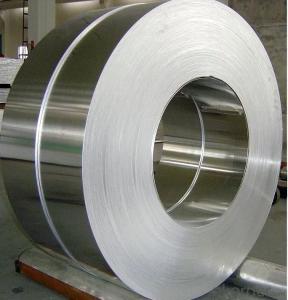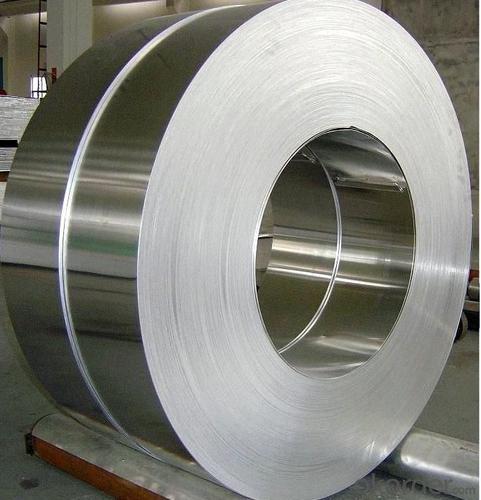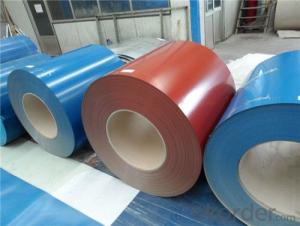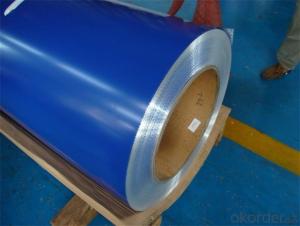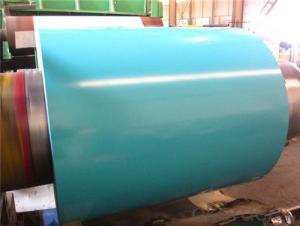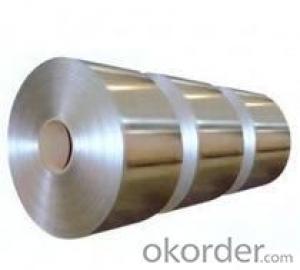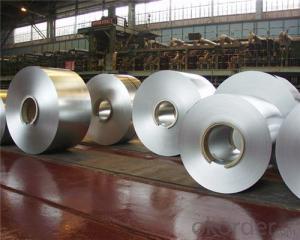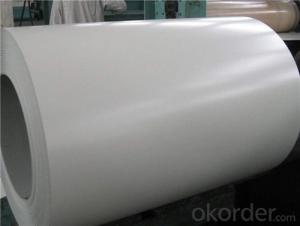GL Steel Coil for Warehouse Roofs Construction
- Loading Port:
- China main port
- Payment Terms:
- TT OR LC
- Min Order Qty:
- 50 m.t.
- Supply Capability:
- 10000 m.t./month
OKorder Service Pledge
OKorder Financial Service
You Might Also Like
Specification
GL Coil for Warehouse Roofs Used for Construction
Main Specification for GL Coi
Products | GI/GL | PPGI/PPGL | CR | Corrugated Steel Sheet |
Grade | SGCC, CGCC, SPCC, ST01Z, DX51D, A653 | |||
Standard | JIS G3302 / JIS G3312 / ASTM A653M / A924M 1998 | |||
Origin | China(Mainland) | |||
Raw material | SGCC, SPCC, DC51D, SGHC,A653, | |||
Certificate | ISO9001.ISO14001.OHSAS18001 | |||
Technique | hot rolled/ | pre-painted, hot rolled | cold rolled | pre-painted, hot rolled/cold rolled |
Thickness | 0.12mm-2.0mm | |||
Width | 600mm-1250mm | |||
Tolerance | thickness+/-0.01mm | |||
T Bending | ≤ 3T/4T | |||
Anti-MEK Wiping | 100times | |||
Zinc coating | ≤275g /m2 | |||
Color options | RAL Color System or as per buyer’s color sample. | |||
Type of | 2/1 or 2/2 coating, or customized | 2/1 or 2/2 coating, or customized | ||
Coil weight | 3-8MT | 3-8MT | 12-13MT | 3-8MT |
Type | Coil or Plate | |||
Spangle | big / small / no spangle | |||
Hardness | Soft---full hard | |||
Supply ability | 550,000/3 | 450,000/4 | 280,000/2 | 280,000/2 |
Payment term | T/T; L/C; T/T & L/C | |||
Price | FOB/CFR/CNF/CIF | |||
Delivery time | around 10-15 days after T/T payment or L/C is received. | |||
Product advantages
Our products are manufactured strictly according to national and international standard, and we take a test on every pipe before delivered out. If you want to see our quality certifications and all kinds of testing report, please just ask us for it.
Guaranteed:
If products' quality doesn’t match the description we give or promise before you place your order, we promise 100% refund.
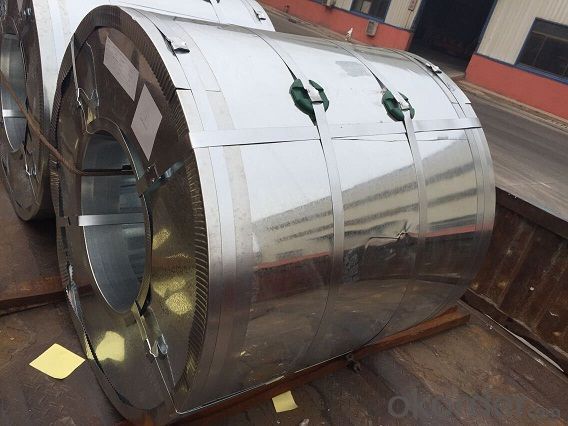
- Q: Molton is formed at 2800 F. Thats a fact. Now jet fuel at its hottest is 1800. Where does the other 1000 degress come in? And it was found at the WTC 7 site. Was this hit by a plane? A simple fire COULD NOT produce molton. This is a fact. Molton is formed during controlled demoliton of a building since all the bombs in the buiding go off and its very very hot. The fact there was MOLTON at the site is shocking to some since it is IMPOSSIBLE for molton to form from jet feul alone. Impossible. It needed another source. Now the claim that I'll get is that it weakened the stell but then we would find weak steel not molton. Why do you seem to throw this off of your shoulder? Do you not want to belive it? I'm no jet fuel guy but I know you cannot make molton by using just jet fuel. This is really proof that 9/11 was an inside job.
- Aircraft frames are made out of aluminum and magnesium which burn very hot once they reach flame point. The other 1000 degrees can come from fire being in a a semi confined space, and heat building over time, plus you can reduce the heat if you add pressure which the building was under to start with. I did like a 2 year stint testing construction materials, I know a little bit about how they behave.
- Q: What is the role of steel coils in the manufacturing of agricultural machinery?
- Steel coils are essential in the manufacturing of agricultural machinery as they are used to form various components such as frames, chassis, and structural supports. These coils provide the necessary strength, durability, and rigidity required to withstand the demanding conditions and heavy workload typically encountered in the agricultural sector.
- Q: I was cutting a sheet of steel with an angle grinder when suddenly the rate at which the blade was cutting slowed way down. I tried a few different things, and turned off the tool and looked at the blade. It didn't look damaged, but it definitely was not cutting as quickly. I thought either I had hit a harder section of steel (is that possible? It looked pretty uniform) or the blade had lost it's abrasive quality or something. Also, before this happened I had accidentally cut into the wooden sawhorse that was holding up the steel sheet, but I've done that before with no problem. After a short while the problem fixed itself and the rate of cutting went back to a fast normal. Anyone know why this happened?
- Sounds like the abrasive surface got blinded, coated with something that prevented the abrasive particles from touching the steel. It is possible to have vastly different hardnesses in a single piece of steel. Case hardening, carburizing, induction hardening, heat affected zone from welding, differences in work hardening, and presence of inclusions are some of the things that can create hardness variation within a single piece. But... sounds like you are working with a sheet which is unlikely to have any of these conditions. So... it was probably the grinding disk
- Q: That's my question, well that and:Steel Pick + Electric Guitar = Trashed Guitar?:D
- That's not a question, it's a statement. And how would using any kind of pick trash a guitar? At worst it would harm a $5 set of strings, not the guitar.
- Q: How are steel coils used in the production of building facades?
- Steel coils are used in the production of building facades as they provide a durable and versatile material for creating structural components such as panels, cladding, and roofing. The coils are processed and shaped into the desired form, allowing for easy customization and installation. The strength and resistance of steel make it an ideal choice for facades, ensuring long-lasting and aesthetically pleasing buildings.
- Q: What are the different types of welding used for steel coils?
- There are several different types of welding used for steel coils, depending on the specific requirements and applications. Here are some of the most common types of welding techniques used for steel coil fabrication: 1. Shielded Metal Arc Welding (SMAW): Also known as stick welding, it involves the use of a flux-coated electrode and an electric current to create an arc between the electrode and the base material. SMAW is a versatile and widely used welding technique suitable for various steel coil applications. 2. Gas Metal Arc Welding (GMAW): Commonly known as MIG (Metal Inert Gas) welding, GMAW uses a continuous wire electrode and a shielding gas to protect the weld pool from atmospheric contamination. GMAW is known for its high welding speed and ease of automation, making it a popular choice for steel coil manufacturing. 3. Flux-Cored Arc Welding (FCAW): Similar to GMAW, FCAW uses a tubular electrode with flux inside. The flux provides both the shielding gas and additional alloying elements, resulting in increased efficiency and improved weld quality. FCAW is often used in high-speed welding applications for steel coils. 4. Gas Tungsten Arc Welding (GTAW): Also known as TIG (Tungsten Inert Gas) welding, GTAW uses a non-consumable tungsten electrode and an inert gas, typically argon, to shield the weld area. GTAW produces high-quality, precise welds with excellent control over the heat input, making it suitable for thin steel coil materials and critical welding applications. 5. Submerged Arc Welding (SAW): This welding technique involves the use of a continuously fed wire electrode and a granular flux that covers the weld area. The arc is submerged under the flux, providing excellent protection and reducing the need for post-weld cleaning. SAW is commonly used for welding thick steel coils due to its high deposition rates and deep penetration capabilities. These are just a few examples of the different types of welding techniques used for steel coil fabrication. The choice of welding method depends on factors such as the specific steel grade, thickness, desired weld quality, production speed, and cost considerations. It is essential to select the appropriate welding technique to ensure the durability and performance of the steel coils in various applications.
- Q: I have a steel plate 3' long x 2 wide x 3/16 thick. I have a 1/2 diameter hole with the center 3/4 from the end. Tensile strength is 38,000psi. A chain goes through the hole and is connected to a load. how does one determine how much tension the chain can have before it rips through the hole?
- Your title asks for the working load, yet your problem asks for the failure load (ripping the plate). These are two different things, since there must be a factor of safety on the failure load to get to the working load. The factor of safety varies from code to code and depending on what the plate/chain is being used for. The failure load would be the net cross section of the plate (after subtracting out the hole) x the strength of the plate. In this case it would be (2 - .5)*3/16*38000psi=10,687.5 lbs You would also need to check the strength of the chain to make sure that it doesn't break before the plate.
- Q: How are steel coils used in the manufacturing of food processing equipment?
- Steel coils are used in the manufacturing of food processing equipment to create sturdy and durable structures. These coils are often formed into various shapes and sizes to serve as the framework for machines such as mixers, grinders, ovens, and conveyors. The strength and resilience of steel make it an ideal material for withstanding the demanding conditions of food processing, ensuring the safety and efficiency of the equipment.
- Q: How are steel coils used in the manufacturing industry?
- Steel coils are used in the manufacturing industry for a variety of purposes such as making automotive parts, appliances, construction materials, and machinery. The coils are typically unwound and processed into sheets or strips, which can then be shaped, cut, or formed into the desired finished product. The versatility, strength, and durability of steel make it a valuable material in the manufacturing process, and the use of coils helps maximize efficiency and productivity.
- Q: What are the common coil edge options?
- The common coil edge options include open coil edges, closed coil edges, and double heat-treated coil edges.
Send your message to us
GL Steel Coil for Warehouse Roofs Construction
- Loading Port:
- China main port
- Payment Terms:
- TT OR LC
- Min Order Qty:
- 50 m.t.
- Supply Capability:
- 10000 m.t./month
OKorder Service Pledge
OKorder Financial Service
Similar products
Hot products
Hot Searches
Related keywords
